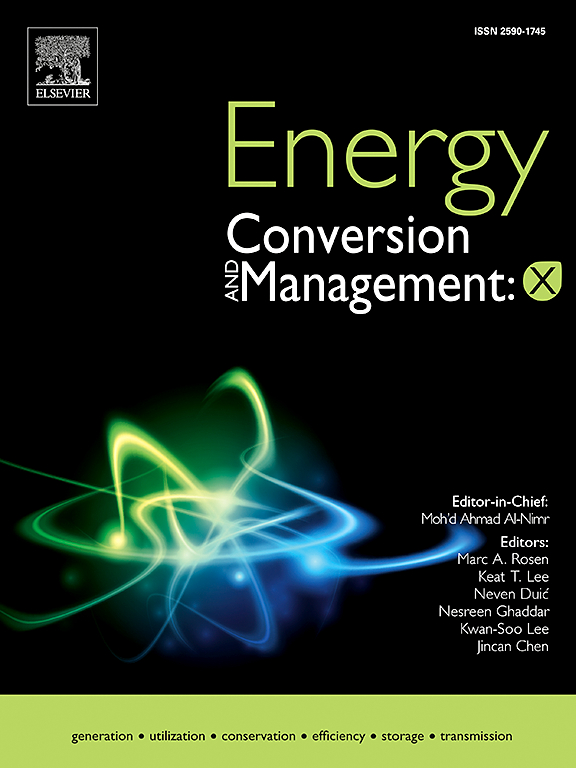在氢经济背景下,实现深层地下煤气化大规模强化制氢
IF 9.9
1区 工程技术
Q1 ENERGY & FUELS
引用次数: 0
摘要
煤地下气化(UCG)是一种新兴的清洁能源技术,具有提高氢气产量的巨大潜力,特别是与注水相结合时。以前的实验室规模的研究已经探索了这种潜力,但是在大尺度、深UCG环境中驱动水辅助氢增强的机制仍然不清楚。本研究通过为面向氢的UCG设计的大型深部煤模型的数值模拟来解决这一差距。我们研究了单点和多点注水策略,以优化氢气产量。此外,我们开发了一种可伸缩注水技术,以确保持续的氢气输出和有效的空腔控制。我们的研究结果表明,水气转换反应对提高氢气产量至关重要。多点注入已被证明比单点注入更有效,在等量蒸汽的情况下,氢气产量可提高11%。引入可伸缩注氢系统后,可实现连续高效制氢,日制氢速率约为常规注氢方案的5倍,同期累计制氢量增加约105%。重要的是,多点注入方法还有助于限制垂直空腔的生长,降低含水层污染的风险。这些发现支持了UCG作为向氢经济过渡的低碳能源的潜力。本文章由计算机程序翻译,如有差异,请以英文原文为准。
Enabling large-scale enhanced hydrogen production in deep underground coal gasification in the context of a hydrogen economy
Underground coal gasification (UCG) is an emerging clean energy technology with significant potential for enhanced hydrogen production, especially when coupled with water injection. Previous lab-scale studies have explored this potential, but the mechanisms driving water-assisted hydrogen enhancement in large-scale, deep UCG settings remain unclear. This study addresses this gap using numerical simulations of a large-scale deep coal model designed for hydrogen-oriented UCG. We investigated single-point and multipoint water injection strategies to optimize hydrogen production. Additionally, we developed a retractable water injection technique to ensure sustained hydrogen output and effective cavity control. Our results indicate that the water–gas shift reaction is crucial for increasing hydrogen production. Multipoint injection has been proven to be more effective than single-point injection, increasing hydrogen production by 11% with an equal amount of steam. The introduction of retractable injection allows for continuous and efficient hydrogen generation, with daily hydrogen production rates of approximately five times that of a conventional injection scheme, and an increase in cumulative hydrogen production of approximately 105% over the same time period. Importantly, the multipoint injection method also helped limit vertical cavity growth, mitigating the risk of aquifer contamination. These findings support the potential of UCG as a low-carbon energy source in the transition to a hydrogen economy.
求助全文
通过发布文献求助,成功后即可免费获取论文全文。
去求助
来源期刊

Energy Conversion and Management
工程技术-力学
CiteScore
19.00
自引率
11.50%
发文量
1304
审稿时长
17 days
期刊介绍:
The journal Energy Conversion and Management provides a forum for publishing original contributions and comprehensive technical review articles of interdisciplinary and original research on all important energy topics.
The topics considered include energy generation, utilization, conversion, storage, transmission, conservation, management and sustainability. These topics typically involve various types of energy such as mechanical, thermal, nuclear, chemical, electromagnetic, magnetic and electric. These energy types cover all known energy resources, including renewable resources (e.g., solar, bio, hydro, wind, geothermal and ocean energy), fossil fuels and nuclear resources.
 求助内容:
求助内容: 应助结果提醒方式:
应助结果提醒方式:


